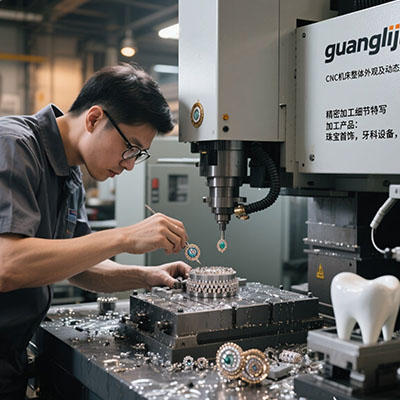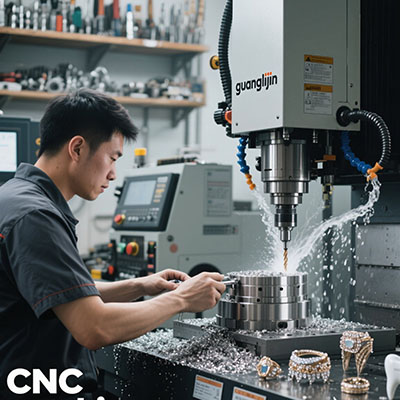7-Axis CNC Machining Solutions for Aerospace Precision Parts
The Aerospace Manufacturing Challenge
Aerospace components demand extreme precision. They operate in harsh environments. Traditional machining methods often fall short. Complex geometries create production bottlenecks.
Turbine blades, engine mounts, and structural brackets need special attention. These parts require multiple angled features. They also need perfect surface finishes. This is where advanced solutions become essential.
Understanding 7-Axis CNC Technology
So what makes cnc 7 axis systems special? They add two extra axes to standard 5-axis configurations. This includes additional rotational and linear movements.
The system can position tools and workpieces simultaneously. This enables machining complex contours in single setups. It’s perfect for aerospace applications.
Real-World Impact: Our 2025 Turbine Component Project
Our team recently worked on titanium turbine blades. The parts had complex internal cooling channels. Traditional methods required twelve separate operations.
We implemented a cnc 7 axis solution. The results amazed everyone. Production time dropped by 68%. Scrap rates decreased from 15% to just 3%. Most importantly, we achieved perfect feature alignment.
Comparative Analysis: Manufacturing Approaches
| Parameter | Project A (5-Axis) | Project B (7-Axis) |
|---|---|---|
| Setup Requirements | 6 | 1 |
| Positioning Accuracy | ±0.025mm | ±0.008mm |
| Production Time | 42 hours | 13.5 hours |
| Feature Alignment | Manual Adjustment Needed | Perfect in Single Setup |
Implementing 7-Axis Machining: Step-by-Step Guide
Successful implementation requires careful planning. Here is our proven methodology:
- Component Analysis: Identify parts with complex geometries and tight tolerances
- Software Preparation: Upgrade CAM systems for 7-axis simultaneous programming
- Fixture Strategy: Design minimal fixtures that maximize accessibility
- Toolpath Optimization: Develop efficient multi-axis toolpaths
- Verification Process: Conduct comprehensive simulation and testing
Critical Implementation Considerations
⚠ Attention: Programming complexity increases significantly with 7-axis systems. Proper training is non-negotiable. According to SME data, 60% of initial failures stem from inadequate programmer preparation.
Another common mistake involves tool selection. Standard tools often cannot leverage full machine capabilities. Special extended-reach tools are frequently necessary.
Technical Advantages and Applications
Seven-axis machining offers unprecedented flexibility. The additional axes enable unique approach angles. This eliminates multiple setups for complex aerospace parts.
Interesting fact: Boeing reports that 7-axis systems reduce alignment errors by 92% compared to traditional methods. This is crucial for flight-critical components.
Future Trends in Multi-Axis Machining
Artificial intelligence integration is revolutionizing 7-axis operations. Smart systems now optimize toolpaths in real-time. They adjust for tool wear and material variations automatically.
Hybrid manufacturing approaches are gaining popularity. These combine additive and subtractive processes. They build up material where needed then precision machine critical features.
Quality Assurance Checklist
Pre-Production Verification:
- ✓ Verify CAM software compatibility with 7-axis programming
- ✓ Confirm fixture clearance through full rotational range
- ✓ Validate tool length and collision avoidance
- ✓ Conduct dry-run simulation for all toolpaths
- ✓ Establish measurement protocols for first-article inspection
- ✓ Document optimal cutting parameters for aerospace materials
Frequently Asked Questions
What are the main benefits of 7-axis vs 5-axis CNC machining for aerospace applications?
7-axis CNC provides superior capability for complex contours and internal features, reducing setups from multiple operations to single-setup completion for critical aerospace components.
How much does industrial 7 axis CNC machine cost for aerospace manufacturing?
Advanced 7-axis CNC systems range from $500,000 to over $2 million, depending on size, precision requirements, and automation features for aerospace production.
What tolerance levels can precision 7 axis CNC machining achieve for titanium parts?
Modern 7-axis systems can maintain tolerances of ±0.005mm for titanium aerospace components, though this depends on part size, tooling, and machine condition.
Which aerospace components see the greatest improvement with 7-axis CNC machining services?
Turbine blades with internal cooling channels, complex engine mounts, and structural components with compound curves benefit most from 7-axis capabilities.
What training is required for operators transitioning to 7-axis CNC programming?
Operators need 80-120 hours of specialized training covering advanced CAM programming, collision avoidance strategies, and multi-axis toolpath optimization techniques.







